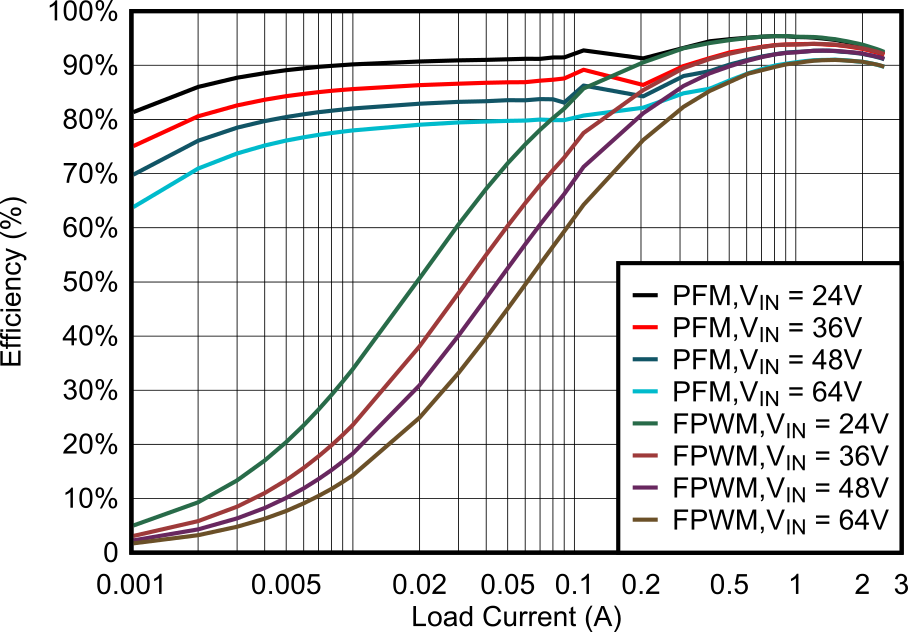SNVSCH7 February 2024 LMR38025
PRODUCTION DATA
- 1
- 1 Features
- 2 Applications
- 3 Description
- 4 Device Comparison Table
- 5 Pin Configuration and Functions
- 6 Specifications
-
7 Detailed Description
- 7.1 Overview
- 7.2 Functional Block Diagram
- 7.3
Feature Description
- 7.3.1 Fixed Frequency Peak Current Mode Control
- 7.3.2 Adjustable Output Voltage
- 7.3.3 Enable
- 7.3.4 Switching Frequency and Synchronization (RT/SYNC)
- 7.3.5 Power-Good Flag Output
- 7.3.6 Minimum On Time, Minimum Off Time, and Frequency Foldback
- 7.3.7 Bootstrap Voltage
- 7.3.8 Overcurrent and Short-Circuit Protection
- 7.3.9 Soft Start
- 7.3.10 Thermal Shutdown
- 7.4 Device Functional Modes
- 8 Application and Implementation
- 9 Device and Documentation Support
- 10Revision History
- 11Mechanical, Packaging, and Orderable Information
Package Options
Mechanical Data (Package|Pins)
- DRR|12
Thermal pad, mechanical data (Package|Pins)
- DRR|12
Orderable Information
6.7 Typical Characteristics
Unless otherwise specified the following conditions apply: TA = 25°C, VIN = 24V, fSW = 400kHz

| FSW = 400kHz | VOUT = 12.0V |

| FSW = 400kHz | VOUT = 5.0V | PFM version |
 Figure 6-5 High-Side and
Low-Side Current Limit vs Temperature
Figure 6-5 High-Side and
Low-Side Current Limit vs Temperature
| VOUT = 5V | RFBB = 100k |

| VIN = 48.0V |
 Figure 6-6 VIN
UVLO vs Temperature
Figure 6-6 VIN
UVLO vs Temperature